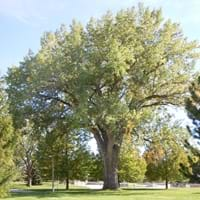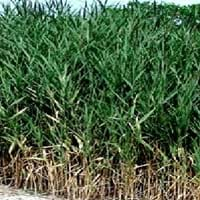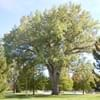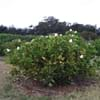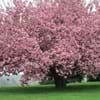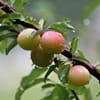Life Span
Perennial
Perennial
Origin
Northeastern United States, Mid-Atlantic United States, Southeastern United States, Central United States, Canada, Mexico
Southern Europe
Types
Plains Cottonwood, Rio Grande cottonwood
Arundo, Carrizo
Number of Varieties
Not Available
Habitat
bottomlands, Floodplain, Hardwood forests, Riverbanks
Saline Soils, Sandy areas
USDA Hardiness Zone
3-9
6-10
Sunset Zone
1a, 1b, 2a, 2b, 3a, 3b, 4, 5, 6, 7, 8, 9, 10, 11, 14, 15, 16, 17, 18, 19, 20, 21
3a, 3b, 4, 5, 6, 7, 8, 9, 10, 11, 12, 13, 14, 15, 16, 17, 18, 19, 20, 21, 22, 23, 24
Habit
Upright/Erect
Upright/Erect
Flower Color
Red, Green
Not Available
Flower Color Modifier
Bicolor
Bicolor
Fruit Color
White
Not Available
Leaf Color in Spring
Green, Gray
Green, Gray Green
Leaf Color in Summer
Green
Light Green
Leaf Color in Fall
Yellow
Green, Gray Green
Leaf Color in Winter
Not Available
Green, Gray Green
Leaf Shape
Toothed curved and flat petiole
Linear
Plant Season
Summer, Fall
Spring, Summer, Fall, Winter
Sunlight
Full Sun
Full Sun
Growth Rate
Very Fast
Very Fast
Type of Soil
Loam, Sand
Clay, Loam, Sand
The pH of Soil
Acidic, Neutral
Acidic, Neutral, Alkaline
Soil Drainage
Average
Average
Bloom Time
Early Spring
Late Summer, Early Fall, Fall, Late Fall
Tolerances
Drought, Soil Compaction, Wet Site
Wet Site, Drought, Salt
Where to Plant?
Ground
Ground
How to Plant?
Seedlings, Stem Planting
From Rhizomes, Stem Planting
Plant Maintenance
Low
Medium
Watering Requirements
Keep ground moist, Requires regular watering, Requires watering in the growing season, Water daily during growing season, Water Deeply, Water more in summer
Requires a lot of watering
In Summer
Ample Water
Lots of watering
In Spring
Ample Water
Moderate
In Winter
Average Water
Average Water
Soil pH
Acidic, Neutral
Acidic, Neutral, Alkaline
Soil Type
Loam, Sand
Clay, Loam, Sand
Soil Drainage Capacity
Average
Average
Sun Exposure
Full Sun
Full Sun
Pruning
Remove dead branches, Remove hanging branches
Do not prune during shooting season, Prune after harvesting, Remove damaged leaves, Remove dead branches, Remove dead leaves
Fertilizers
fertilize in growing season, Nitrogen
All-Purpose Liquid Fertilizer, Fertilize in early spring
Pests and Diseases
Aphids, Borers, Caterpillars, Insects
Not Available
Plant Tolerance
Drought, Soil Compaction, Wet Site
Drought
Flower Petal Number
Not Available
Single
Foliage Texture
Medium
Bold
Foliage Sheen
Glossy
Matte
Invasive
Sometimes
Sometimes
Attracts
Not Available
Bees, Birds, Hummingbirds
Allergy
Hay fever, Headache, Runny nose, sneezing
allergic conjunctivitis, flushing of face, wheezing
Aesthetic Uses
Landscape Designing
Beautification, Bonsai
Beauty Benefits
No Beauty Benefits
Making cosmetics, Skin cleanser
Edible Uses
Yes
Sometimes
Environmental Uses
Air purification, Forms dense stands, Prevent Soil Erosion, Shadow Tree, Shelter for wildlife, Wildlife, Windbreak
Agroforestry, Air purification, Nesting sites for birds, No fertilizer, pesticides, or herbicides needed, Prevent Soil Erosion, Shadow Tree, soil stabilisation
Medicinal Uses
Anodyne, Anthelmintic, anti-inflammatory, Febrifuge
Diaphoretic, Diuretic, Emmoiliant
Part of Plant Used
Inner Bark, Leaves, Seeds
Bark, Sap
Other Uses
Biomass for fuel, Used as firewood, Used As Food
Basketary, Showy Purposes, Used in making musical instruments, Wood is used in construction
Used As Indoor Plant
No
Sometimes
Used As Outdoor Plant
Yes
Yes
Garden Design
Screening / Wind Break, Shade Trees
Container, Cutflower, Dried Flower/Everlasting, Feature Plant, Mixed Border, Screening / Wind Break, Tropical, Water Gardens
Botanical Name
POPULUS deltoides
ARUNDO donax
Common Name
Eastern Cottonwood
Giant Reed
In Hindi
Eastern Cottonwood
नरकट
In German
Eastern Cottonwood
Pfahlrohr
In French
Cottonwood Orient
Arundo donax
In Spanish
Cottonwood del Este
Arundo donax
In Greek
Ανατολική Cottonwood
Arundo donax
In Portuguese
Cottonwood Oriental
Cana-do-reino
In Polish
Eastern Cottonwood
Lasecznica trzcinowata
In Latin
Orientalium Poplar
Arundo donax
Phylum
Anthophyta
Angiosperms
Class
Dicotyledonae
Liliopsida
Order
Salicales
Cyperales
Family
Salicaceae
Poaceae
Clade
Angiosperms, Eudicots, Rosids
Commelinids
Tribe
Not Available
Not Available
Subfamily
Salicoideae
Not Available
Number of Species
Not Available
Season and Care of Eastern Cottonwood and Giant Reed
Season and care of Eastern Cottonwood and Giant Reed is important to know. While considering everything about Eastern Cottonwood and Giant Reed Care, growing season is an essential factor. Eastern Cottonwood season is Summer and Fall and Giant Reed season is Summer and Fall. The type of soil for Eastern Cottonwood is Loam, Sand and for Giant Reed is Clay, Loam, Sand while the PH of soil for Eastern Cottonwood is Acidic, Neutral and for Giant Reed is Acidic, Neutral, Alkaline.
Eastern Cottonwood and Giant Reed Physical Information
Eastern Cottonwood and Giant Reed physical information is very important for comparison. Eastern Cottonwood height is 3,050.00 cm and width 2,130.00 cm whereas Giant Reed height is 18.00 cm and width 150.00 cm. The color specification of Eastern Cottonwood and Giant Reed are as follows:
Eastern Cottonwood flower color: Red and Green
Eastern Cottonwood leaf color: Green and Gray
Giant Reed flower color: Not Available
- Giant Reed leaf color: Green and Gray Green
Care of Eastern Cottonwood and Giant Reed
Care of Eastern Cottonwood and Giant Reed include pruning, fertilizers, watering etc. Eastern Cottonwood pruning is done Remove dead branches and Remove hanging branches and Giant Reed pruning is done Do not prune during shooting season, Prune after harvesting, Remove damaged leaves, Remove dead branches and Remove dead leaves. In summer Eastern Cottonwood needs Ample Water and in winter, it needs Average Water. Whereas, in summer Giant Reed needs Lots of watering and in winter, it needs Average Water.
